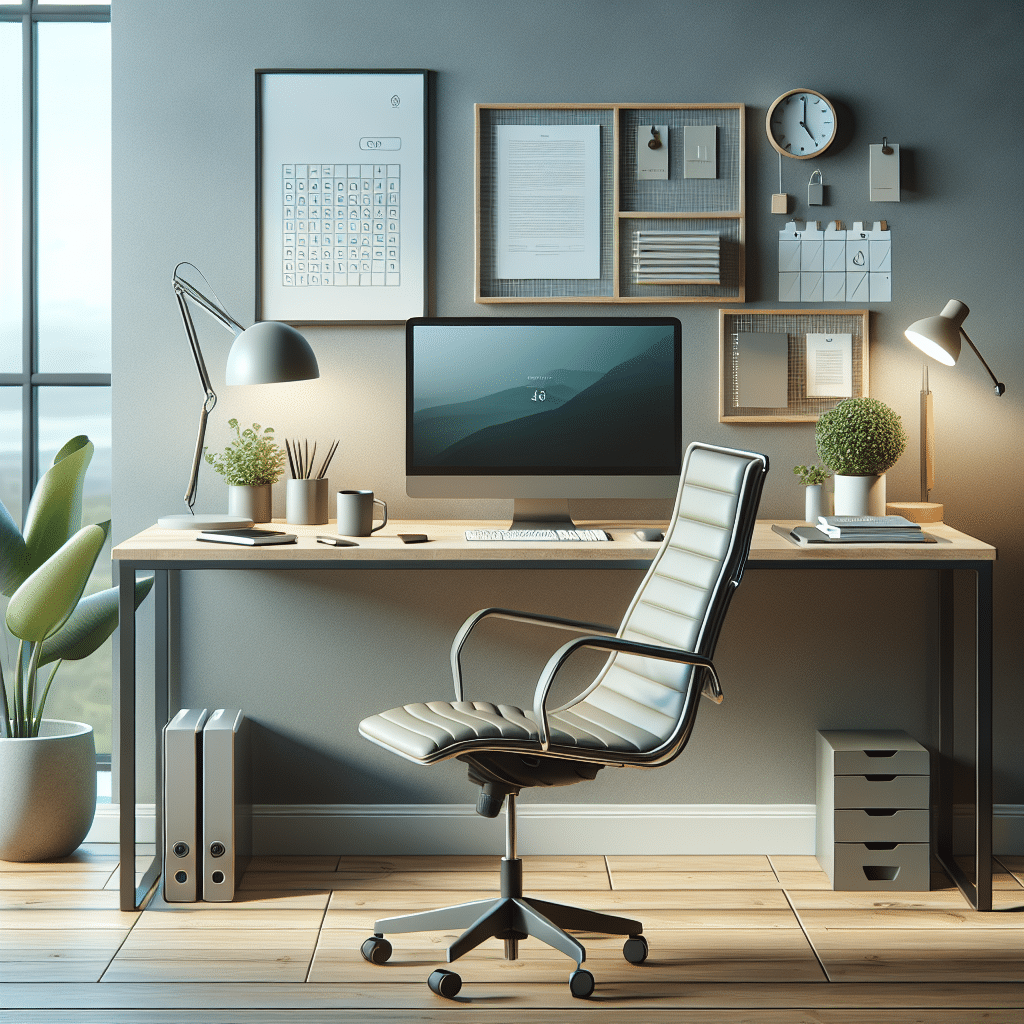Understanding Minimalist Desk Setup
Minimalism in design, particularly in workspace organization, emphasizes simplicity and utility. A minimalist desk setup for remote workers is not just about aesthetics; it’s designed to maximize productivity while minimizing physical and mental clutter.
Key Components of a Minimalist Desk Setup
1. Desk Selection
Choosing the right desk is crucial. Opt for a clean, flat surface that accommodates only the essentials. Materials such as wood or metal provide durability while maintaining a simple look. A height-adjustable standing desk can also foster movement throughout the day, enhancing both health and productivity.
2. Appropriate Chair
An ergonomic chair promotes comfort, supporting posture during long working hours. Look for features such as adjustable height, lumbar support, and breathable fabric. The minimalist style emphasizes a neutral palette, avoiding overly complicated designs.
Essential Tech for Remote Work
1. Monitor Arrangement
Investing in a good monitor is vital for remote work. A single, larger monitor often suffices for most tasks. Position it at eye level to prevent neck strain. Use a monitor stand if needed, ensuring that only the necessary cables are on display, thus maintaining a clean look.
2. Keyboard and Mouse
A wireless keyboard and mouse reduce cord clutter, contributing to a clean aesthetic. Ergonomic options are available to enhance comfort, both of which can be tucked away when not in use. Consider a keyboard tray to keep the surface clear when typing.
Organizational Tools
1. Minimalist Organizers
Use minimal organizers like document trays and cable management solutions. Clear acrylic or wooden trays maintain an open look. Prioritize a single pen holder for essential tools and avoid excessive items that can create distractions.
2. Digital Organization
Just as physical organization matters, so does digital. Utilize tools such as cloud storage and task management apps. Adopt a system to keep files streamlined and accessible, such as categorizing by project or date, which can help minimize digital clutter.
Lighting Considerations
1. Natural Light
Position the desk near a window to benefit from natural light. This not only boosts mood but also reduces eye strain. If natural light is insufficient, consider a desk lamp with adjustable brightness. The lamp’s design should be sleek and unobtrusive, complementing the minimalist aesthetic.
2. Color Temperature
Using daylight bulbs in your lighting fixtures can enhance alertness and improve focus. Aim for a color temperature of 5000K to 6500K for optimal productivity levels.
Personal Touches
1. Minimal Décor
While minimalism prioritizes a lack of non-essential items, incorporating a few personal elements can make the workspace feel inviting. Choose one or two pieces of art or photographs that resonate with you, ensuring they follow a clean design. Plants, like succulents, add a touch of nature without overwhelming the space.
2. Inspirational Quotes
Consider framing a motivational quote to encourage positive thinking. The frame should harmonize with the overall decor—opting for simple designs that don’t distract from the main work area.
Sound Management
1. Noise-Canceling Headphones
For remote workers, especially those who face distractions in their home environments, high-quality noise-canceling headphones are essential. Choose a pair that combines comfort with effective sound reduction to help maintain focus.
2. Soundproofing Elements
If noise remains a concern, consider adding soundproofing elements like acoustic panels. These can blend seamlessly into a minimalist setup too without adding visual clutter.
Efficient Workflow
1. Task-Driven Organization
Organizing the workspace based on tasks can streamline workflow. For instance, placing frequently used items close at hand, while less critical tools are stored away, helps minimize interruptions and clutter.
2. Time Management Tools
Employ simple timers or digital to-do lists to maintain a strict work schedule. This encourages a focused approach to tasks while helping segregate work and personal time effectively.
Flexible Furniture to Maximize Space
1. Multi-Functional Furniture
Select furniture pieces that serve multiple purposes. A desk that folds up or includes shelving can save space and enhance functionality, ensuring that the workspace remains uncluttered.
2. Portable Solutions
Consider mobile storage units or carts that can be moved as needed, keeping the desk area flexible and adaptable to different working styles.
Maintaining the Setup
1. Regular Decluttering
Establish a routine for decluttering. Weekly or monthly, assess what items are necessary and discard or store those that contribute to clutter. Keeping the workspace tidy fosters a conducive working environment.
2. Consistent Maintenance
Regularly clean the desk surface to maintain its appearance. Dust and dirt accumulation can be distracting and decreases the aesthetic appeal of a minimalist setup.
Combining Aesthetics with Functionality
A minimalist desk setup combines aesthetics with functionality. Every element serves a purpose, promoting efficiency while creating a soothing atmosphere. By focusing on quality over quantity, remote workers can create a space that enhances productivity, fosters creativity, and remains a joy to occupy throughout the day.
A well-designed workspace that embraces minimalism can lead to tangible improvements in work efficiency and personal well-being.
